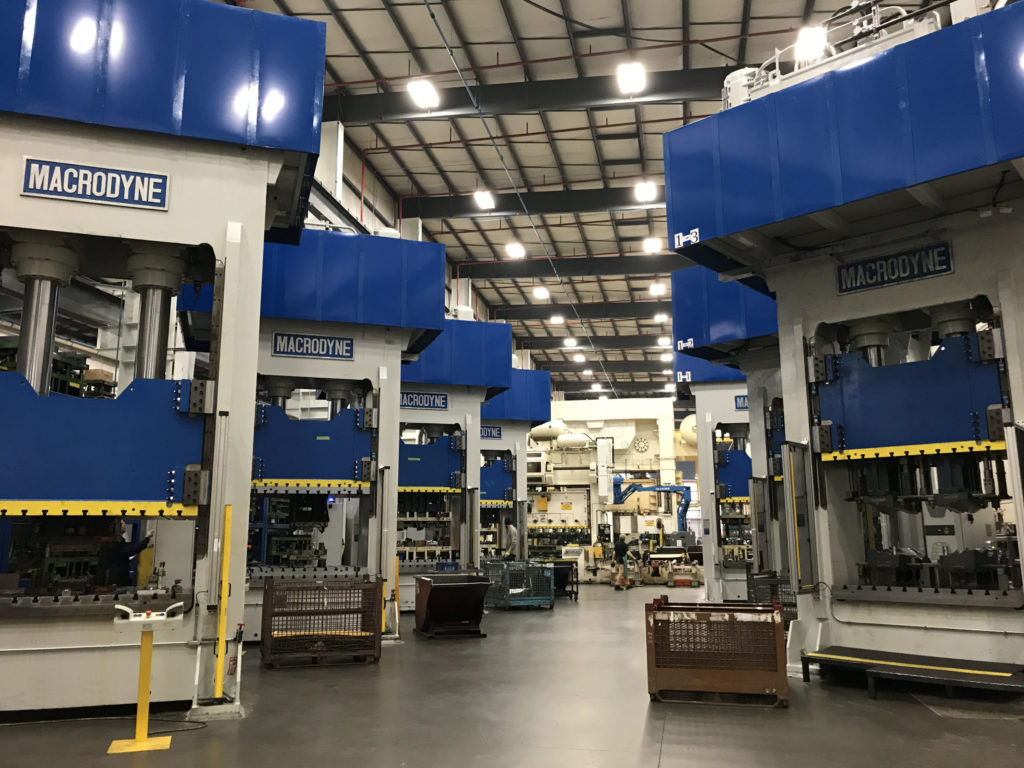The Development of Metal Stamping Modern Technology: A Comprehensive Review
The Development of Metal Stamping Modern Technology: A Comprehensive Review
Blog Article
Metal Marking Innovations: Elevating Production Processes for Superior Outcomes
In the realm of producing processes, metal stamping has long been a foundation strategy for creating an array of precision components. With the relentless march of technological development, the landscape of metal stamping is going through a substantial makeover.
Advancement of Steel Stamping Techniques

In addition, improvements in product science have resulted in the growth of high-strength alloys that can now be flawlessly stamped into complex shapes, satisfying a wider series of commercial applications. The integration of robotics and expert system has additionally maximized the marking process by enhancing rate and precision while reducing the risk of human error.

Influence of Advanced Products
Have innovative materials changed metal marking processes considerably in the production industry? By making use of materials such as high-strength alloys, progressed compounds, and ingenious coverings, steel stamping processes can currently produce elements that are lighter, stronger, and much more sturdy than ever before.
These sophisticated products supply premium mechanical buildings, deterioration resistance, and thermal security, permitting producers to fulfill the needs of modern industries such as aerospace, automotive, and electronic devices. In addition, using advanced materials in steel marking has assisted in the manufacturing of intricate geometries and intricate designs that were previously unattainable through typical methods.
Additionally, the application of sophisticated products has caused lowered material waste, lower manufacturing prices, and much shorter preparations, making metal stamping processes more sustainable and economical. As modern technology continues to advance, the influence of sophisticated materials on metal marking processes is expected to drive more technology and boost the competition of suppliers in the global market.
Automation in Metal Stamping
The evolution of steel marking procedures driven by the combination of innovative materials has set the phase for substantial improvements in automation within the production sector. Automation in metal stamping has actually reinvented production processes, boosting effectiveness, precision, and overall result top quality. With the utilization of robotics, sensing units, and computer-controlled systems, tasks that were when manual and taxing can now be implemented with unequaled speed and precision.
Automation in metal marking not just increases manufacturing rates yet likewise guarantees consistency in the production procedure. By decreasing human treatment, the danger of errors is significantly lowered, causing greater degrees of product harmony and dependability. Furthermore, automation makes it possible for manufacturers to take on complex marking jobs that would be tough or unwise to attain manually.
Furthermore, automation in metal marking adds to a more secure working environment by minimizing the need for staff members to participate in repeated or unsafe jobs - Metal Stamping. This change towards automation not only improves performance however additionally leads the way for the future of manufacturing, where innovation plays a main role in driving operational quality
Quality Control and Evaluation Equipments
With a focus on precision and dependability, quality assurance and examination systems play an essential function in ensuring product quality in metal marking procedures. These systems are created to monitor every stage of production, from material assessment to the last item, to assure that all elements satisfy the needed criteria. By implementing sophisticated modern technologies such as optical examination systems, coordinate determining equipments (CMM), and automated determining tools, manufacturers can discover also the tiniest discrepancies in dimensions, surface area quality, and overall integrity of stamped components.

Sustainability Practices in Metal Stamping
Building upon the foundation of accuracy and integrity developed with quality assurance and evaluation systems, the combination of sustainable practices in steel stamping procedures is significantly coming to be a focal factor for makers seeking to reduce environmental effect and enhance resource utilization. Sustainability techniques in steel stamping encompass a series of initiatives aimed at lowering waste generation, power usage, and greenhouse gas discharges throughout the manufacturing procedure.
One secret aspect of sustainability in metal marking is the fostering of environment-friendly products and technologies that promote recyclability and waste decrease. By utilizing recycled products and implementing energy-efficient equipment, producers can decrease their carbon impact and add to a more lasting production cycle. Furthermore, enhancing manufacturing procedures to minimize product waste and energy use not just profits the environment yet likewise results in set you back savings for businesses over time.
Furthermore, the application of lasting methods in steel stamping can boost brand name online reputation and interest environmentally mindful consumers. As sustainability continues to obtain value in the production market, incorporating green initiatives right into steel stamping procedures is necessary for long-term success and competition in the market.
Final Thought
To conclude, metal stamping strategies have significantly developed gradually, including innovative products and automation to improve producing processes. Quality control and assessment systems play an essential function in making certain exceptional outcomes, while sustainability techniques are increasingly being executed to decrease environmental effect. These technologies in metal marking have actually changed the sector, leading to much more lasting and reliable manufacturing methods for various markets.
Metal marking, as soon as a manual and labor-intensive process, has changed you can find out more right into a very automated and sophisticated approach of forming steel sheets right into different forms and layouts.Have advanced products transformed steel stamping procedures dramatically in the manufacturing market? By utilizing materials such as high-strength alloys, advanced composites, and cutting-edge coatings, metal marking procedures can now generate elements that are lighter, more powerful, and much more resilient additional info than ever in the past.
The advancement of steel stamping processes driven by the integration of innovative products has actually set the stage for significant developments in automation within the production sector.In final thought, metal marking techniques have substantially progressed over time, incorporating advanced products and automation to improve manufacturing procedures.
Report this page